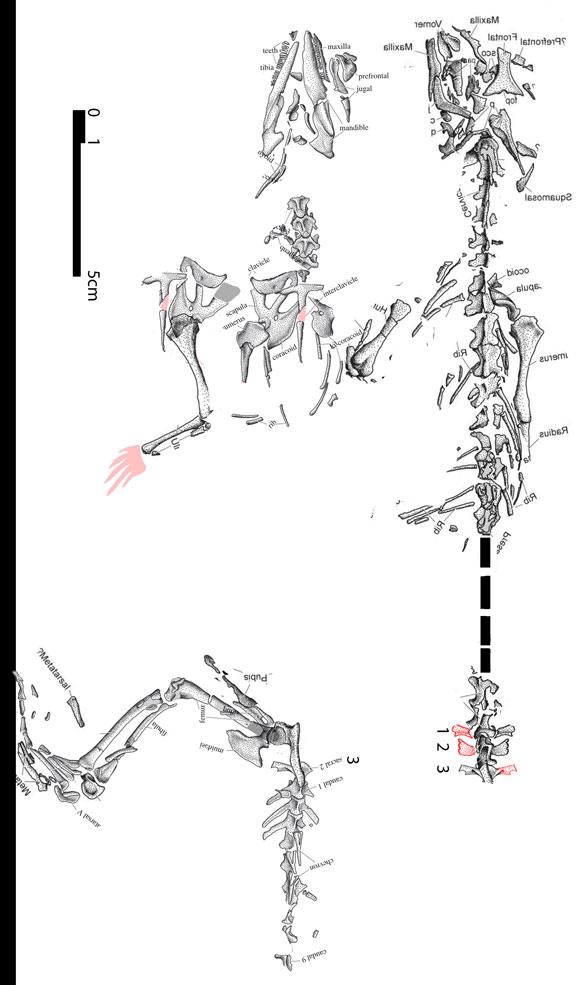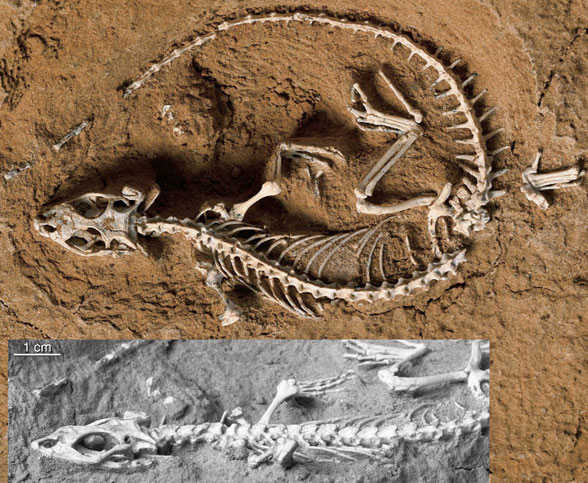We first looked at the Late Cretaceous lizard,
Magnuviator (Figs. 1–3; MOR 6627 (Museum of the Rockies), back in 2017. Recently I discovered the SuppData, which presents the counterplate. Combining the two creates a better reconstruction, one that can be scored a little more accurately. Add these corrections to the many, many others made over the past decade as new data makes itself known.

After adding the counterplate data,
so few scores changed that Magnuviator stayed where it was originally nested. That should come as no surprise. Many taxa in the LRT are correctly nested based on incomplete data because there is no such thing as ‘modular (mosaic) evolution.’

Magnuviator was found on the famous Egg Mountain
of Montana where Maiasaura laid its eggs. Estimated at 21.5cm snout-vent length, the addition of an Acanthodactylus-like tail would at least have doubled this. Given its similar morphology (Fig. 1) perhaps Magnuviator was also facultatively bipedal, running in an among the hadrosaur mothers and hatchlings.

Originally Magnuviator
(DeMar et al. 2017; Late Cretaceous) nested with another Late Cretaceous squamate, Saichangurvel (Fig. 4), as it does here, and with Acanthodactylus, a small extant lizard capable of bipedal locomotion (Fig. 1). So, no phylogenetic changes from then to now.

References
DeMar Jr DG, Conrad JL, Head JJ, Varricchio DJ and Wilson GP 2017. A new Late Cretaceous iguanomorph from North America and the origin of New World Pleurodonta (Squamata, Iguania). Proc. R. Soc. B 284: 20161902.
Druelle F, Goyens J, Vasilopolou-Kampitsi M and Aerts P 2019. Compliant legs enable lizards to maintain high running speeds on complex terrains. Journal of Experimental Biology 222(6): jeb195511.
